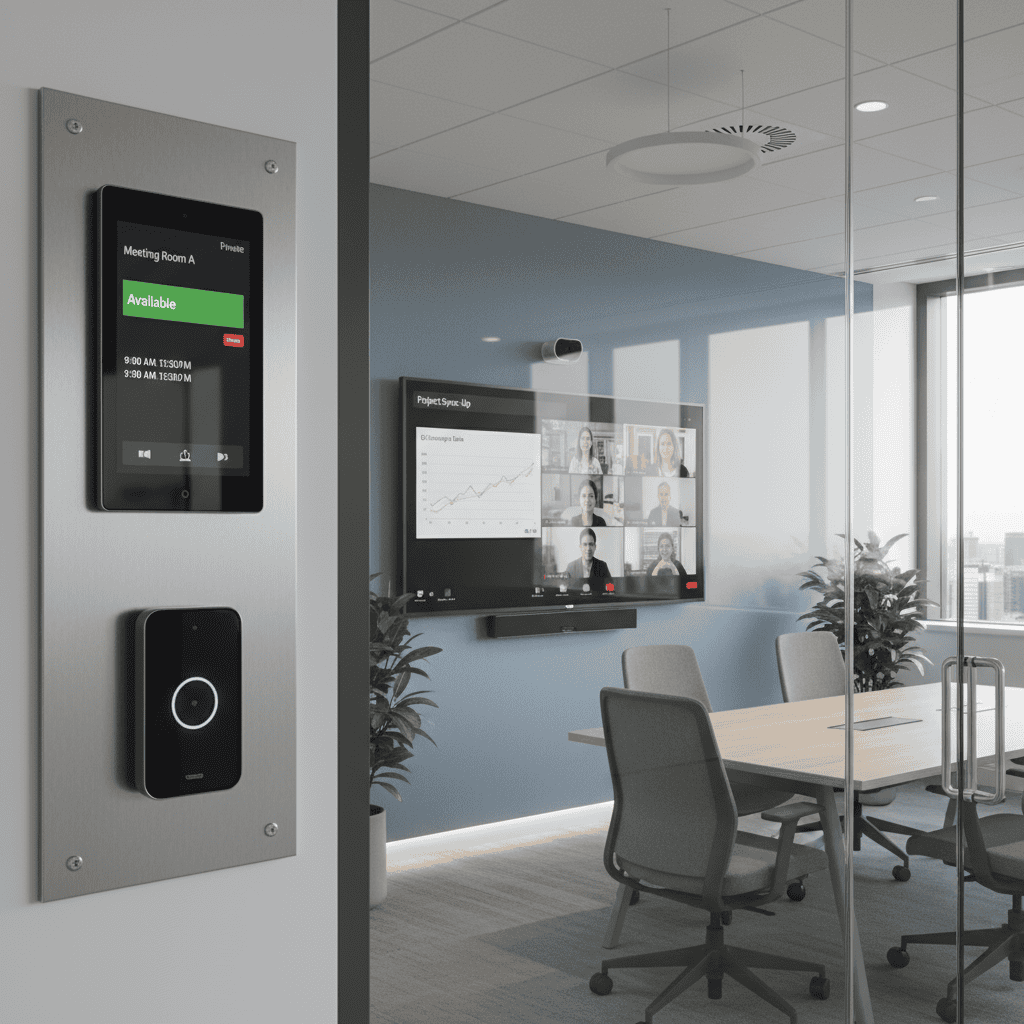The Ultimate Guide to Building Management Systems (BMS)

What is a Building Management System (BMS)?
A Building Management System (BMS) or Building Automation System (BAS) is a centralized platform that regulates important building systems. These include many different components of facility control, including:
- HVAC
- Lighting
- Security
- Fire safety
The primary role of building management systems is to optimize resource usage while also constantly ensuring occupant well-being. Read this blog article for a BMS overview, how BMS work, the many benefits they offer, and other important considerations.
What Are the Different BMS Types?
There are a number of different BMS categories, which can be sorted based on their application. They are:
Integrated BMS
You can think of an integrated BMS as a sort of master control system. This BMS is an all-encompassing umbrella, covering all your building elements such as:
- HVAC
- Lighting
- Security
Energy Management BMS
An energy management system is optimized for energy efficiency. The system utilizes data analysis and automatic adjustments to save both energy and money for you, the building owner.
Single System BMS
As the name suggests, this particular BMS is tailored for an individual aspect of the building, like the air conditioner or lights. It’s not nearly as complex as other systems, since it only involves a singular component of building control.
Cloud-based BMS
For those who need or desire remote connectivity, a cloud-based BMS allows for real-time management via an internet connection. It can be controlled via an app or software, so you never need to be present to make adjustments.
Industrial BMS
An industrial BMS unit is specifically designed for facilities like factories or warehouses. They’re designed to provide extra efficiency and control for especially large buildings.
What Are the Different Components of a BMS?
BMS are quite complex and employ a variety of components to provide effective facility monitoring and control. BMS components include:
Sensors and Actuators
These are the core components of your BMS! Sensors and actuators collect data and execute commands, keeping your system running seamlessly at all times. Alarm systems provide timely notifications for any anomalies, letting you know if there’s an issue right away.
Centralized Control Interface
A centralized interface makes real-time monitoring and adjustments possible. Energy management is facilitated through data analysis, while tend analysis aids in predicting system behavior. This part of the system also allows for remote access and BMS operation.
Reporting and Analytics
To achieve energy efficiency and aid in cost savings, BMS are also equipped with reporting and analytical capabilities. These offer deep insights into BMS functionality and efficiency and let the system know when to make adjustments.
What Are the Main Benefits of Building Management Systems?
Implementing a BMS can bring a host of benefits and significantly simplify managing your building’s climate besides just improved energy efficiency. Here are some of the key BMS benefits:
1. Improved Comfort In Your Facility
BMS can do much to improve comfort in your facility, automatically controlling elements like heat and air conditioning to ensure the building always stays at an optimal temperature.
2. Robust Security Management
Using a BMS also boosts your facility’s security, thanks to features like access control and surveillance. As smart home technology and Bluetooth appliances become more popular, good security is necessary to prevent people from tampering with your building. BMS helps prevent this with built-in security BMS features.
3. Decreased Downtime
Another great perk of BMS is that they utilize predictive maintenance. By performing software updates and maintenance on a set schedule, downtime at your operation is minimized.
How Do Building Management Systems Work?
At its core, BMS operates through a sophisticated interplay of functionalities to streamline your facility automation process. This begins with data collection from various sensors that monitor systems like HVAC and lighting. This data is then analyzed and compared against predefined parameters. Based on these comparisons, the BMS triggers appropriate actions through actuators, like adjusting temperature or activating alarms
The centralized control interface provides real-time oversight and allows operators to make manual interventions if needed. The result is an efficient method of managing buildings that allows for remote access and instant adjustments.
Integrating BMS with Smart Buildings
BMS integration plays a pivotal role in the transformation of conventional buildings into smart, connected spaces. By seamlessly interfacing with various systems, BMS harnesses the power of the Internet of Things (IoT) in facilities. BMS acts as the central nervous system, compiling a number of complex and crucial tasks, including:
- Orchestrating the interactions between different systems
- Optimizing resource usage
- Fostering an environment of adaptability
- Automating key tasks
BMS integration propels the evolution of smart buildings, revolutionizing the way you’re able to interact with and manage the indoor environments around you.
BMS Challenges and Security Concerns
BMS implementation, while promising numerous benefits, presents a set of challenges and security considerations that require careful attention.
System Integration
One of the largest challenges with BMS is integrating diverse systems and various technologies into a single framework. This process can sometimes be quite intensive, requiring significant overhaul and finances to properly complete.
Cybersecurity Vulnerabilities
BMS vulnerabilities can expose your building systems to cyber threats! Be sure to implement robust security measures and stay up-to-date with all maintenance and legal requirements. Outdated software can quickly become a breeding ground for vulnerabilities that cyber attackers can exploit.
Efficient Building Management Systems
BMS are essential for effectively managing and growing your facility. They offer numerous benefits when properly implemented, including:
- Increased energy efficiency
- Cost savings
- Remote access
- Data and analytical feedback
- Simplifying your building automation process
- Improved security
- Decreased downtime
- Increased comfort levels in your building
i.e.Smart Systems provides support for businesses to integrate digital technologies into their facilities. Our team of experts has been working since 2000 to provide the best system management and integration solutions available on the market. Whether you need a brand new system designed and installed or just need ongoing maintenance for your current system, our friendly team is here to help. Click here to request a quote from us today!
About i.e.Smart Systems
i.e.Smart Systems is a Houston, TX based technology integration partner that specializes in design and installation of audio/visual technology and structured cabling. For more than three decades, our team of in-house experts has partnered with business owners, architectural firms, general contractors, construction managers, real estate developers, and designers in the Houston market, to deliver reliable, scalable solutions that align with their unique goals.




